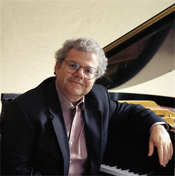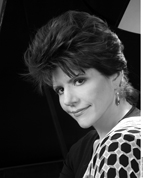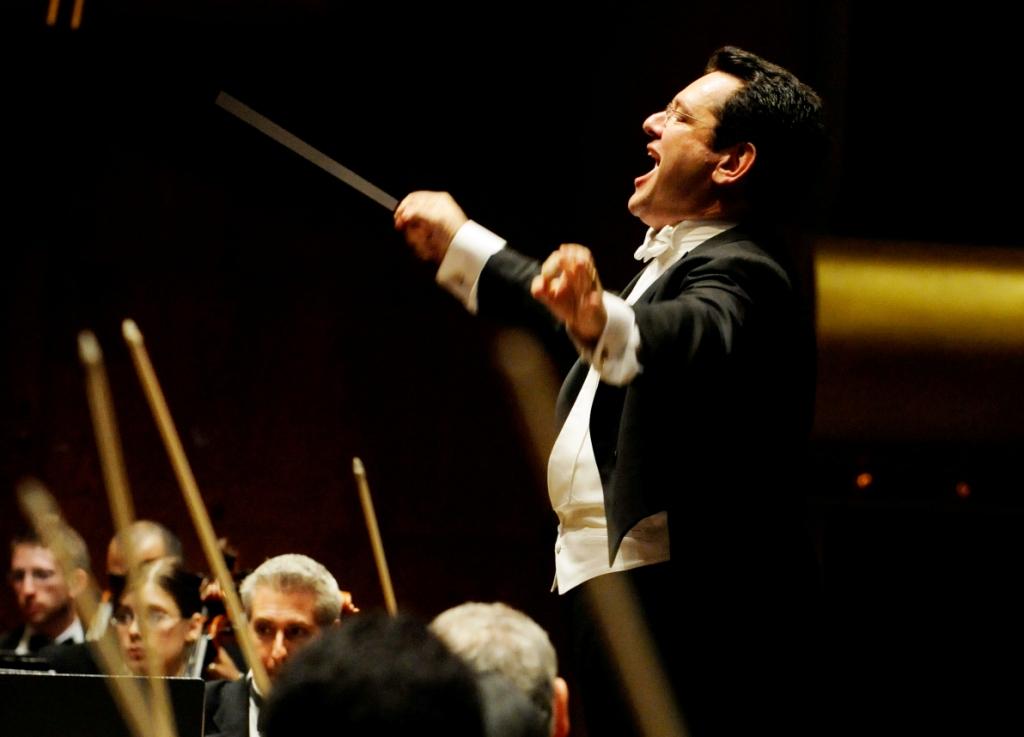 Despite a huge snow storm and a prediction of one, people came out in droves to the large Stern Auditorium at Carnegie Hall to see Emanuel Ax and Joshua Bell. In many ways, violin and piano recitals sound best in smaller, more intimate spaces for which they were intended, but Ax and Bell sell lots of tickets and they need a space that can meet demands. On February 10th, 2010, Manhattan received about 10 inches of snow—not nearly as much as Washington D.C. got the week before—but nonetheless, it was enough to potentially scare people away. Good thing Emanuel Ax has such a great following; the many that attended were treated to a 200th Anniversary celebration of Chopin and Schumann’s birth. Ax was at his best in music by Chopin: the Polonaise-fantaisie in A-flat, the Andante spianato and Grand Polonaise, and especially three Mazurkas: the op 41, No. 1 in C-sharp Minor; the Op. 24, No. 2 in C Major and the Op. 56, No. 3 in C Minor. The young Brit Thomas Ades wrote three mazurkas of his own for the occasion, and they are charming—although they don’t really sound like mazurkas. The first one was almost a carbon copy of Prokofiev, but the last two were quite inventive, with unusual leaps and harmonies. Throughout the program, Ax often used his soft-pedal, and his subdued, semi-passionate performances of Schumann’s Fantasiestucke and Fantasy in C Major lacked some grandeur and spontaneity in faster passages. His encore, the Chopin Waltz in A minor, was also one of his more automatic-pilot performances. Maybe his performance inadvertently hurried as a result of subconsciously and altruistically wanting people to get home after a stormy day. (I know; it’s a stretch)
Despite a huge snow storm and a prediction of one, people came out in droves to the large Stern Auditorium at Carnegie Hall to see Emanuel Ax and Joshua Bell. In many ways, violin and piano recitals sound best in smaller, more intimate spaces for which they were intended, but Ax and Bell sell lots of tickets and they need a space that can meet demands. On February 10th, 2010, Manhattan received about 10 inches of snow—not nearly as much as Washington D.C. got the week before—but nonetheless, it was enough to potentially scare people away. Good thing Emanuel Ax has such a great following; the many that attended were treated to a 200th Anniversary celebration of Chopin and Schumann’s birth. Ax was at his best in music by Chopin: the Polonaise-fantaisie in A-flat, the Andante spianato and Grand Polonaise, and especially three Mazurkas: the op 41, No. 1 in C-sharp Minor; the Op. 24, No. 2 in C Major and the Op. 56, No. 3 in C Minor. The young Brit Thomas Ades wrote three mazurkas of his own for the occasion, and they are charming—although they don’t really sound like mazurkas. The first one was almost a carbon copy of Prokofiev, but the last two were quite inventive, with unusual leaps and harmonies. Throughout the program, Ax often used his soft-pedal, and his subdued, semi-passionate performances of Schumann’s Fantasiestucke and Fantasy in C Major lacked some grandeur and spontaneity in faster passages. His encore, the Chopin Waltz in A minor, was also one of his more automatic-pilot performances. Maybe his performance inadvertently hurried as a result of subconsciously and altruistically wanting people to get home after a stormy day. (I know; it’s a stretch)
“Houston, We Have a Problem”
 If any orchestra should tour with Holst’s “The Planets”, the Houston Symphony should—due to its relationship with NASA and the Johnson Space Center. But a film experiment directed by Duncan Copp called “The Planets: an HD Odyssey” didn’t work: the space images and video, though extraordinarily clear and beautiful, were too generic for Holst’s mythical descriptions of the planets and our own imaginations that inevitably follow. It was like experiencing an orchestra play James Horner’s riveting music to the film
If any orchestra should tour with Holst’s “The Planets”, the Houston Symphony should—due to its relationship with NASA and the Johnson Space Center. But a film experiment directed by Duncan Copp called “The Planets: an HD Odyssey” didn’t work: the space images and video, though extraordinarily clear and beautiful, were too generic for Holst’s mythical descriptions of the planets and our own imaginations that inevitably follow. It was like experiencing an orchestra play James Horner’s riveting music to the film
“Titanic” while watching real under-water pictures of the sunken ship. One is reality; the other delves into story-telling.
In the future, a few actual stills of a planet could be shown at the beginning of each movement of the suite, and the remainder should focus on the music and the orchestra with the lights up (the players were hardly visible). In terms of future video accompaniment, I’d rather watch close-ups of the Houston performers playing this fantastically detailed score. On the other hand, the Houston Symphony, which sounded less-than-stellar in “The Planets”, might want to make some changes; there were several unclear attacks and missed notes from the trumpets and horns, and the playing as a whole lacked tonal refinement and a robust symphonic sound. The orchestra’s music director, Hans Graf, led light, airy performances of Stravinsky’s “Scherzo fantastique” and “Fireworks”, which book-ended the program, and Dutilleux’s “Timbres, espace, mouvement, ou La Nuit etoilee” was given a dedicated performance, with the orchestra’s fine cello and bass sections sounding strong and well-blended.
Gilbert’s Seamless Schumann
On December 30th, 2009, The New York Philharmonic, with Alan Gilbert conducting, gave one of the greatest performances of Schumann’s Second Symphony you will ever hear. Why? Not only was it executed with a beautiful, polished sound by all the sections in the orchestra, but the interpretation was extremely honest to the extent that every musical gesture was in tune with the composer and his score. Exaggeration and showmanship are words associated with past conductors at the Philharmonic, and if anything, we heard the opposite: some of Schumann’s tempo changes were conducted so seamlessly–with such subtlety–that they almost went unnoticed. The first movement was jovial but intense; the Scherzo was played with a controlled jauntiness; the Adagio espressivo movement was played with a sincere tenderness, and the finale was simply glorious. The New York Philharmonic and Alan Gilbert make a case that Schumann’s Second Symphony is one of the greatest symphonies of all time. Let’s hope they perform this work often.
Quintessential Gershwin at the Philharmonic

On December 31st, 2009, conductor Alan Gilbert wisely let the New York Philharmonic do their thing (and that swing) in Gershwin’s “American in Paris”, as the orchestra—due to its long history with the work– can possibly play it like they play Bernstein’s “Candide Overture”: that is without a conductor. But I exaggerate a bit; some of the tricky tempo changes, balances and juxtapositions of rhythm need to be negotiated smoothly by a conductor with taste. Gilbert impressively accomplished that, and the end result was the quintessential performance of “An American in Paris”.
Continuum
 In the first concert of its 44th New York season, Continuum did one of the things it does best: explore important, talented composers who are relatively unknown in this country. Music of Canada was presented in a program entitled “Northern Exposures: Canadian Music—The New Individualists.” I came away from this program thinking that Canadian composers are indeed unique and tend to go their separate ways.
In the first concert of its 44th New York season, Continuum did one of the things it does best: explore important, talented composers who are relatively unknown in this country. Music of Canada was presented in a program entitled “Northern Exposures: Canadian Music—The New Individualists.” I came away from this program thinking that Canadian composers are indeed unique and tend to go their separate ways.
This concept of originality was exemplified by the U.S. Premiere of Paul Frehner’s deceivingly-titled work, Slowdown, from 2004. It’s a brilliantly-written, frenzied trio for not just one pianist, not two, but yes, three pianists at one keyboard. The idea of three pianists sitting together is pretty inventive, but the way he slows the momentum of the piece into a kind of improvisatory state is where the real imagination lies. The Other recently composed U.S. premieres that backed-up the Canadian individualist theory were Ana Sokolovic’s portrait parle for piano trio, an original and inspired work depicting the physiognomy of the face; Jocelyn Morlock’s Curvilinear uniquely scored piece for solo accordion, inspired by ancient folk music; and Michael Oesterle’s Sunspot Letters, a first-rate work that evokes Galileo’s writings.
New York Premieres included Linda Catlin Smith’s Mois qui tremblais from 1999, a hypnotic, profound work for violin, bass drum, and piano in which the musicians perform from an annotated text of Rimbaud. Andrew Staniland’s Blue (2008), is a poignant work based on a poem by Walt Whitman; Tajikistan-born Farangis Nurulla-Khoja’s Blind Flower, written for Continuum in 2008, draws up highly original musical tone colors; and Melissa Hui’s Wish You Were Here (2003), is an Asian-inspired meditation for flute, cello, percussion, and piano that was beautifully exotic and memorable.
The perennial top-of-the-line artists included the pianists and co-directors Cheryl Seltzer and Joel Sachs, violinist Renee Jolles, clarinetist Moran Katz, the flutist Ulla Suokko, mezzo-soprano Abigail Fischer, William Schimmel on accordion, oboist Toni Marie Marchioni, violist Stephanie Griffin, cellist Karen Ouzounian, percussionist Jared Soldiviero, and pianist Shahan Arzruni.
This free concert is without a doubt one of the greatest musical holiday gifts to New Yorkers. We learned more about Canadian composers and Canada itself, but also were enchanted and enlightened by the beauty, excitement and great diversity of Canadian music.
The Park Avenue Chamber Symphony
In a program called “Cinematic Genius”, the conductor David Bernard explored concert pieces that were later incorporated into film. Johann Strauss’s “On the Beautiful Blue Danube” seems far-fetched for a film about outer space, but Stanley Kubrick pulled off wonders with it in “2001, A Space Odyssey” when he used dreamier Strauss moments to represent timelessness in space. Bernard left excerpts of the film run on screen during a complete performance of the Strauss, and it didn’t always mesh in mood–exciting dance music as a backdrop for a person walking down a spaceship corridor, for example–but you’ve got to give Bernard credit for a charming, well-prepared performance of this concert staple. I also applaud him for choosing a stylistically well- balanced program, one that presented music from three different centuries.
Drew Petersen, who performed Mozart’s Piano Concerto No. 20 in D Minor, K.466, is a 16-year-old student at the Manhattan school of Music Pre-College division. He has considerable technique—his notes were in place, the cadenza playing was imaginative, and he has done a lot of wonderful charitable work for communities who need young artists like him. Unfortunately, he had to perform on a small Kawai piano, and there was little resonance and warmth of sound. Regarding a cinematic decision, I didn’t understand the need to roll the entire closing credits of the film “Amadeus” to the concerto’s slow movement. It’s a lovely choice for the movie, but here it was a distraction.
The performance of Shostakovich’s challenging Fifth Symphony was very impressive.
Bernard has chosen players wisely; the orchestra seems to have affection for each other, and their enthusiasm for the music was undeniable. The mysterious third movement of the Fifth was incorporated into a scene of the Harrison Ford film “Patriot Games,” and it was interesting to see when it was used. Unless Mr. Bernard chooses music that was written specifically for film, I do think that excerpts of concert works used in film should be heard with the movie only before performing the work as a whole. This way, you educate the audience about a film director or film composer’s approach to a classic score and also preserve the intention of the composer. In any case, David Bernard and the orchestra should be very proud of what they’ve accomplished; I look forward to hearing them again.
Aglaia Koras, piano
 Pianist Aglaia Koras suffered through a car accident on her way to her concert on November 5th, so it wouldn’t be fair to go into detail about technicality, memory or specifics of her program. It must be said, however, that her sold-out, full-house crowd was happy to hear her, and I felt that she gave some of the most thoughtful, touching playing of Beethoven and Chopin I have heard her play. She was the come-back kid, and she should be proud to have had the courage to put on a program that many others would have canceled.
Pianist Aglaia Koras suffered through a car accident on her way to her concert on November 5th, so it wouldn’t be fair to go into detail about technicality, memory or specifics of her program. It must be said, however, that her sold-out, full-house crowd was happy to hear her, and I felt that she gave some of the most thoughtful, touching playing of Beethoven and Chopin I have heard her play. She was the come-back kid, and she should be proud to have had the courage to put on a program that many others would have canceled.
This is her fifth consecutive season sponsored by Mid-America Productions. On March 1st, 2010, Ms. Koras will perform an All-Chopin 200th Birthday Tribute recital at Weill Recital Hall.
Ms. Koras loves Chopin, and it shows; she received a top prize in the International Chopin Young Pianists Competition, and in recent seasons, she was invited to perform an All-Chopin recital in Mexico City.
Ms. Koras has been a frequent performer at Carnegie Hall’s Weill Recital Hall, but she has also performed in a special program for the United States Ambassadors in Washington, DC; in recitals at the Kennedy Center; in programs in Spain, Greece, and Brazil; on the Smithsonian website; and in concerts sponsored by the Curtis Alumni and Leschetizky Associations.
As a prize-winner, she also won the International American Music Scholarship Association Piano Competition; the International Concert Artists Guild Competition’s “Fine Artistry and Musical Excellence Award”; and first prize at the National Young Musicians Foundation and Koszciusko Foundation Competitions, among others.
Resilience and courage were the words of the day, and her show-must-go-on-mentality was very much appreciated by all in attendance. Her tradition of Chopin also goes on at Weill Hall on March 1st, and I look forward to it.
La Follia Barocca
Without a doubt, La Follia Barocca is one of the finest Baroque ensembles to ever play in New York. Boundless energy, first-rate precision and an authentic sound are just some of the trademarks of this conductorless orchestra. The leader, Enrico Cassaza, plays with a virtuoso technique and was marvelous in Vivaldi’s Violin Concerto in E Minor “Il Favorito”, playing all the difficult high notes with assured brilliance. The ensemble shows that it is capable of handling the treacherous virtuosity of Tchaikovsky’s Serenade for Strings, for example, yet they are also clearly able to play with subtlety of vibrato, bow speed and dynamics. And they were always together.
The cello soloist, Marcello Scandelli, performed Fiorenza’s Cello Concerto in D Major with the kind of passion typical of the Romantic Era, plus a rich tone, big vibrato and heavy use of portamento. He also brought intensity to the dynamics. His playing of the cadenza even included more common modernistic touches such as over-the-bridge playing (sul ponticello), which produced a slightly rough sound. Geminiani’s Concerto Grosso No. 12 in D minor: Variations on La Follia was played with elegance and intensity. The ensemble playing was highly coordinated.
The orchestra stood throughout the program, looking—as well as sounding—like soloists. The acoustics of St. Bartholomew’s Church are perfect for a group of strings: it can produce a full-bodied sound with warm resonance, yet clarity for harmony and rhythm. And with its look of European antiquity, the space has the perfect atmosphere for the Baroque.
La Follia Barocca was created by a group of talented musicians from Milan with extensive experience in the repertoire of the 17th and 18th centuries. And the series Midtown Concerts is a community outreach program of ARTEK (The Art of The Early Keyboard, Inc.). Free concerts are given each Wednesday at 1:15 by professional early music ensembles and distinguished soloists. I very much hope La Follia Barocca returns to this series and to New York in general. This is the quintessential early-music orchestra: authenticity plus electricity.

